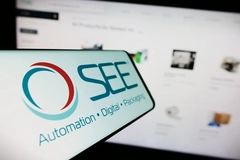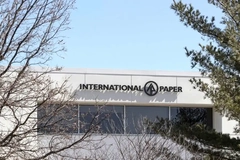Digital printing excels as pandemic labor shortages and market fluctuations usher in new age
07 Feb 2022 --- The print industry is evolving at pace, with digital printing widely recognized as the “next big thing” in labeling and packaging. New megatrends are emerging in digital printing, including labor retention, automation, environmental sustainability and e-commerce.
In a business environment where hiring, training and retaining employees is now a major challenge, digital equipment can help attract a younger workforce with more attractive tools that are easier to operate.
For decades, the label and packaging landscapes have been dominated by analog print methods, such as flexography and litho lamination. However, digital print is proving to be a significant, long-term challenger to these technologies.
PackagingInsights explores the digital transformation in printing for labels and packaging with market leaders HP Indigo, Bobst and Fujifilm.
Digital for pandemic flexibility
According to HP, COVID-19 has created abrupt fluctuations in labels and packaging demand, with interest in some verticals skyrocketing and others declining. During the pandemic, converters equipped with versatile digital production tools could shift from declining to growing verticals and address the brand need for on-demand delivery.
“Digital transformation is not just about technology – it’s about reimagining your company. The time is now for converters to reposition to appeal to brands’ evolving needs and become more attractive to younger workforces,” Haim Levit, VP and general manager at HP Indigo, tells PackagingInsights.
HP Indigo wants to shift the label industry to an “Indigo-first mindset,” which essentially means that an incoming job will be digitally printed unless it is very long, simple or has other characteristics deeming it more appropriate for conventional tools. This approach is the opposite of today’s analog-first mindset. The HP Indigo 6K Secure Press is a one-pass, end-to-end security printing tech, developed with Jura JSP, a high-security graphic arts brand.
The HP Indigo 6K Secure Press is a one-pass, end-to-end security printing tech, developed with Jura JSP, a high-security graphic arts brand.
The company powers its Indigo-first mindset through the Digital Label Factory. This platform is based on a full end-to-end ecosystem, giving label converters the agility to operate in today’s fluctuating markets. It is built on a combination of presses that can handle all types of job baskets and presents a blueprint for customers to move from “next-week” to “next-day” delivery, with less labor required and higher overall equipment efficiency.
“The next big jump in the adoption of digital print in PS labels will take place with the introduction of the HP Indigo V12,” says Eli Mahal, head of labels and packaging marketing at HP Indigo. “A production floor combining HP Indigo 6K – the backbone of digital label printing – and the HP Indigo V12 running at 120 meter/min will allow converters to shift from the analog-first to Indigo-first mindset.”
The upswing in online business through e-commerce and web-to-print is driving the transition to digital. Additionally, small brands continue to grow with more people “revisiting their life journey goals following the COVID crisis,” notes Levit.
Environmental sustainability considerations
Sara Alexander, marketing and communication manager for flexible packaging at Bobst, agrees that converters and their customers must focus on equipment automation to achieve shorter runs, faster turnarounds and increased productivity, counteracting the lack of skilled workforce in the industry.
However, printing efficiencies are also vital in meeting consumer and legislative demands for increased environmental sustainability. “Aligning with the [environmental] sustainability trend, there is also a rise of minimalism in printing in some packaging segments, with consumers expressing a preference for packaging more focused on showcasing the product than flashy graphics,” explains Alexander.
“However, due to the pandemic, there is also an increased need to balance [environmental] sustainability and hygienic needs in packaging,” she adds.
Bobst has pioneered Extended Color Gamut printing (ECG) in its narrow-web solutions and extended its oneECG solutions across printing technologies and to other industries. The ECG process decreases waste and guarantees color consistency. Sara Alexander at Bobst believes printing is the tech that can transform all products into personalized experiences.
Sara Alexander at Bobst believes printing is the tech that can transform all products into personalized experiences.
For flexible packaging, the company offers printers an end-to-end experience in oneECG printing in its centers of excellence for wide-web CI flexo and narrow-mid web inline flexo printing, from pre-press through to the packaging printed reels. It has also developed the oneECG process for gravure printing.
Meanwhile, HP Indigo’s digital presses are “carbon-neutral” and offer reduced production waste and energy efficiency, supporting eco-certified materials including primers, varnishes and adhesives.
“HP Indigo is working with its many partners in the ecosystem to deliver solutions that support a circular economy, conducting testing and validation for recyclability and compostability,” says Mahal.
Future-proof ink printing
Bobst and its industry partners are developing solutions for water-based ink printing in gravure, whose application was previously limited due to the longer drying times, lower press speeds and poor performance on substrates.
“The partnership with the ink manufacturer has resulted in ink formulas that set unprecedented performance and quality levels in gravure printing, and which have much lower VOC content than current water-based offerings on the market,” Alexander tells PackagingInsights.
She adds that IoT solutions to connect and communicate packaging along the converting and printing journey are also essential to improving environmental performance. Digital watermarks to improve sorting and recycling can be crucial here.
“Legislation needs to become clearer on how to dispose of different packaging/substrates, but the packaging printing industry has the opportunity to become a key vehicle for [recycling] communication,” says Alexander.
Meanwhile, Fujifilm’s Illumina LED Cold Cure systems and ink are designed to reduce energy consumption and increase productivity. The company’s digital presses use aqueous inks and do not require a barrier for food packaging. Fujifilm’s J Press FP790 features water-based digital inkjet tech and high opacity white with two digital white inkjet channels.
Fujifilm’s J Press FP790 features water-based digital inkjet tech and high opacity white with two digital white inkjet channels.
According to Richard Mix, national sales manager for labels and packaging at Fujifilm North America Corporation’s Graphic Systems Division, brands are driving more environmentally responsible packaging, with demands ranging from convenience packaging like freezer or shelf direct to microwave options to biodegradable films for flexible packaging.
“Fujifilm’s digital printing equipment supports shorter runs and versioning, reducing waste,” he says. “Also, Fujifilm’s Flenex, waterwash flexo plates are designed to reduce and eliminate harmful chemicals and toxins in the flexo plate making process.”
Brand differentiation
As the packaging and labeling sector evolves toward digital printing and personalization, the industrial print providers who partner with HP and leverage its value-added Brands Innovation services will emerge as market leaders and ensure their survival for “years to come,” argues Jose Gorbea, global head of brands for agencies and sustainability innovation at HP.
The company recently launched a new color automation tool – Spot Master – described as the industry’s “fastest time to color.” Spot Master enables converters to deliver color consistency and uniformity across the entire print frame using a new patented algorithm for fast and accurate color matching. This capability ensures every package looks the same no matter when or where it was printed. For flexible packaging, Bobst offers customers an end-to-end experience in oneECG printing.
For flexible packaging, Bobst offers customers an end-to-end experience in oneECG printing.
“Spot Master enables converters to reach brand colors within five minutes, with an accuracy of less than two delta E and less than five meters of waste. Spot Master not only improves Indigo press productivity but also helps brands to grow with confidence, saving valuable proofing time,” explains Mahal.
Today, brands want packaging that creates a more complete experience for consumers, continues Alexander at Bobst, using unique structures, tactile effects, and decorative elements. “Printing is the technology that can transform all products into personal experiences to fulfill the consumers’ preference for a smart and personalized experience,” she says.
“Whatever the kind of personalization required, by covering all the printing and converting technologies – Gravure, CI flexo, inline flexo, digital, and all-in-one printing – Bobst can offer the most qualitative and efficient process workflow,” Alexander concludes.
By Joshua Poole












